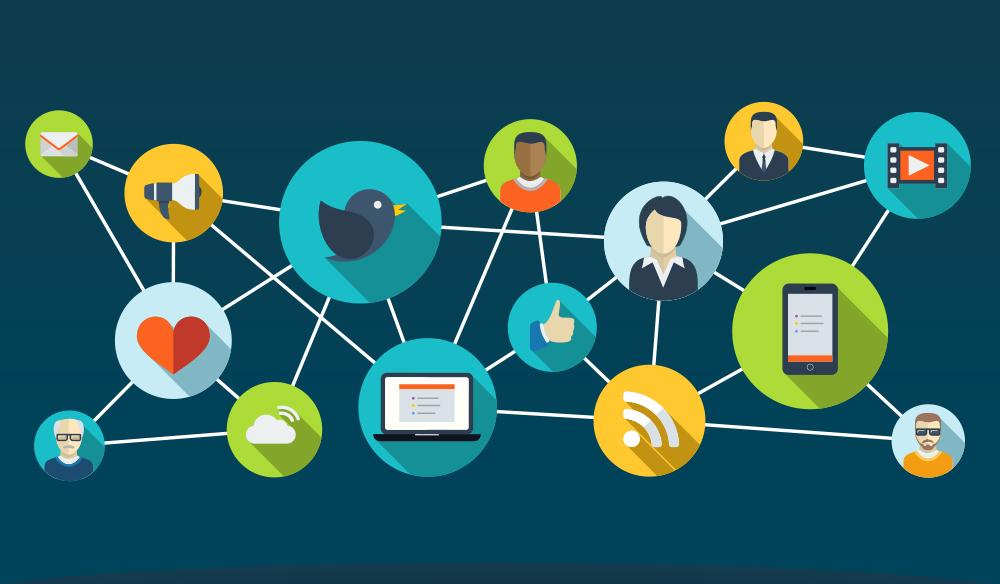In today’s competitive business landscape, effective networking has emerged as a cornerstone for successful B2B lead generation. As companies strive to build meaningful connections and foster relationships, mastering the art of networking can unlock new opportunities and accelerate growth. Whether you’re a seasoned professional or just beginning to explore the world of B2B marketing, understanding the nuances of networking can significantly impact your lead generation efforts. In this article, we’ll delve into practical strategies designed to enhance your networking skills, explore various platforms for connecting with potential clients, and discuss how to leverage relationship building to drive quality leads for your business. Join us as we navigate the essential tactics that can take your B2B networking game to the next level.
Table of Contents
- Exploring the Importance of Building Genuine Relationships in B2B Networking
- Leveraging Social Media Platforms for Enhanced Lead Generation
- Participating in Industry Events: Strategies for Maximum Impact
- Utilizing Data-Driven Approaches to Optimize Networking Efforts
- The Way Forward
Exploring the Importance of Building Genuine Relationships in B2B Networking
In the realm of B2B networking, the importance of fostering genuine relationships cannot be overstated. Unlike traditional networking that often leans heavily on transactional interactions, building authentic connections promotes trust and mutual understanding. When businesses prioritize relationships, they create a foundation for collaboration and shared goals. Key aspects of building these relationships include:
- Active Listening: Truly engage with what others are saying, showing that their thoughts and needs matter.
- Consistency: Regular follow-ups and check-ins can enhance rapport and demonstrate commitment.
- Personalization: Tailor your messaging and approach based on individual preferences and experiences.
This relational approach to networking can significantly influence lead generation. Businesses that exhibit genuine interest often find themselves at a competitive advantage, fostering loyalty and increasing referrals. To chart out effective strategies, consider the following table highlighting essential practices:
| Strategy | Impact on Relationships |
|---|---|
| Attend Industry Events | Facilitates face-to-face interaction and fosters connections. |
| Utilize Social Media | Enhances ongoing engagement and visibility in a professional context. |
| Host Webinars or Workshops | Positions your brand as a thought leader while attracting like-minded individuals. |
Leveraging Social Media Platforms for Enhanced Lead Generation
In today’s digital landscape, social media platforms have emerged as powerful tools for lead generation, particularly in the B2B sector. By harnessing the unique capabilities of platforms like LinkedIn, Twitter, and Facebook, businesses can create a focused approach to engage potential clients. Consider implementing the following strategies:
- Targeted Ads: Utilize advanced targeting options to reach decision-makers based on industry, job title, and interests.
- Content Sharing: Share valuable insights, case studies, and industry trends that resonate with your target audience.
- Networking Groups: Join or create niche-focused groups to foster discussions and connect directly with prospects.
- Live Events: Leverage live streaming features for webinars or Q&A sessions to showcase expertise and invite direct engagement.
Moreover, measuring the effectiveness of your social media strategies is crucial for optimizing your lead generation efforts. By analyzing key metrics, you can refine your approach for better results. Below is a simple table to summarize essential metrics to track:
| Metric | Description | Importance |
|---|---|---|
| Engagement Rate | The percentage of interactions (likes, shares, comments) per post | Indicates content relevance and audience interest |
| Click-Through Rate (CTR) | The ratio of users who click on a link versus those who see the post | Measures the effectiveness of calls to action |
| Lead Conversion Rate | The percentage of leads generated from social media campaigns | Directly reflects the success of lead generation efforts |
Participating in Industry Events: Strategies for Maximum Impact
Participating in industry events can serve as a catalyst for lead generation, but it’s essential to approach each event with a strategic mindset. Begin by identifying the right events that align with your business goals and target audience. Focus on doing thorough research prior to the event to understand not only the attendee demographics but also the topics and speakers that will be featured. This will enable you to tailor your messaging and network effectively. During the event, utilize social media to connect with other participants, engage with event hashtags, and share insights in real time, as this can enhance visibility and establish your authority in the field.
Beyond mere attendance, consider active participation in panels and workshops to showcase your expertise. This provides invaluable opportunities to not just learn but to connect with key players within your industry. Here are some additional strategies to amplify your presence:
- Set specific goals for each event, such as the number of connections to make.
- Follow up promptly with new contacts post-event, referencing your conversations.
- Leverage booth space effectively with engaging displays and materials that reflect your brand.
- Participate in networking sessions and breakouts to foster personal connections.
| Strategy | Benefit |
|---|---|
| Participate in panels | Showcases expertise and increases visibility |
| Utilize social media | Engages broader audience and enhances networking |
| Follow-up communications | Nurtures leads and builds relationships |
Utilizing Data-Driven Approaches to Optimize Networking Efforts
In today’s fast-paced business environment, leveraging data has become essential for enhancing networking strategies. By analyzing relevant metrics, businesses can gain insights into their target audience and identify potential leads effectively. Utilizing tools such as customer relationship management (CRM) systems, social media analytics, and email marketing data allows for a tailored approach to engagement. Brands can uncover trends, such as the times when their audience is most active or the content types that resonate best, leading to more meaningful connections. Consider implementing a data tracking system that includes:
- Demographic Information: Understand the age, location, and industry of your potential leads.
- Engagement Metrics: Track likes, shares, and comments to gauge interest levels.
- Conversion Rates: Measure how many interactions lead to actual business opportunities.
Additionally, employing A/B testing in networking outreach can further refine your methods. By experimenting with different messaging strategies, times of communication, and platforms, you can pinpoint what yields the best results. An organized table can visually represent these strategies and their effectiveness:
| Strategy | Testing Result |
|---|---|
| Email Subject Lines | Increased open rates by 25% |
| Social Media Platforms | LinkedIn outperformed Instagram by 40% |
By continually assessing and adjusting your networking approaches based on data insights, your team can foster deeper connections, ultimately driving more B2B lead generation opportunities.
The Way Forward
effective networking is a powerful tool in the arsenal of B2B lead generation. By strategically building relationships and leveraging connections, businesses can identify new opportunities and cultivate a robust pipeline of potential clients. Remember, networking is not just about collecting contacts; it’s about fostering meaningful relationships that can lead to mutual growth and success.
As you implement these strategies, remain authentic, engage actively, and follow up diligently. The time and effort invested in building your network will undeniably pay off in the form of valuable leads and partnerships. Whether you’re attending events, engaging online, or nurturing existing relationships, keep these principles in mind to enhance your approach. Here’s to expanding your network and watching your lead generation efforts thrive!






